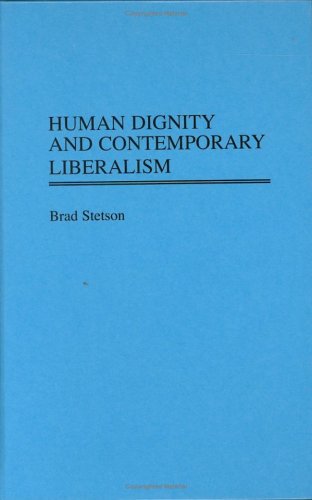In his book on declining social morality and the transformations of liberal ideology, Brad Stetson goes after deserving targets. He unmasks the liberalism that holds the media, universities, and the publishing industry in thrall and stresses the will to total domination that accompanies liberal concerns about racism, sexism, self-actualization, and the costs of low self-esteem. For Stetson, these concerns are the basis of an attack against individual responsibility and self-constraint upon which an older, authentic liberalism rested.
The new liberalism seeks to establish the state “as a highly qualified, desired, and efficient supplier of what people need, whether morally or materially.” Behind this expanded state lies a “normative vision” which Stetson calls “anthropocentrism,” a belief that individuals can do as they please since technology and scientific political management will make the gratification of individual desires possible without the imposition of attendant social and moral duties.
Stetson has much to say in his study that is both correctly stated and transparently true, especially in his comments regarding liberal ethical theory as an elaborate justification for its exponents’ vices. It makes sense for theorists to create “universally” applicable arguments to excuse their private weaknesses and for the unrepentantly weak to be drawn to vocations that allow them to ignore and excuse their faults. Stetson’s invective against those who misrepresent human dignity expresses a proper sense of moral outrage, and I found myself respecting the author in spite of his failure to break new ground.
For the major—perhaps the exclusive—source of Stetson’s critical commentary is movement conservatism. Hence the tedious quotations from George Will, Robert Bork, William Bennett, Dinesh D’Souza, and other conservative celebrities, all of whom assure us that American liberalism lost its way in the 1960’s and that multiculturalism, “radical feminism,” and a derailed civil rights movement—not the government —are the real causes of America’s undoing. Stetson quotes George Will on the danger of conservatives’ “blanket disdain for government and hence for the political vocation,” and adds his own gloss: “in strongly reacting against statism, [conservatism] risks disabling government, which is an important vehicle for character formation.” Moreover, Stetson (again echoing Will) expresses admiration for liberals who participated in the civil rights movement. True to current conservative rhetoric, he attacks excesses and derailments without criticizing the movement itself and trots out such obligator)’ cliches from “Dr.” King as “the content of their character, not the color of their skin.”
Stetson fails to consider the content of the “liberalism” that he abhors. Instead, he merely provides contemporary illustrations of human depravity. Depravity, of course, is as old as sin, and it is not surprising that a depraved but literate society should create a rationale for its vices. More noteworthy is the overshadowing role played by public administrators, judges, cowed or opportunistic politicians, and their media lackeys in extending the power of the state into every human relationship. But Stetson is reluctant to blame the government for the social disintegration that disturbs him. Such criticism, when it does show up in his book, is directed specifically at the “liberal state,” a creation (Stetson explains) of recent times, not to be confused with the “government,” which we must not in any way “disable.” Unfortunately, most of his well-intentioned distinctions are unfounded. The “liberal state” and the neoconservative “government” bear more than a slight family resemblance, and the civil rights movement of the early 60’s became the statist juggernaut of the 70’s without losing its base of support or abandoning the intentions of King, who favored both reparations and affirmative action for blacks. The “liberal state,” moreover, did not begin the project of modifying social behavior in the 60’s and 70’s: it was moving in that direction as early as the Progressive Era and the New Deal. Though Stetson may view favorably the beginnings of this process to create a more “democratic citizenry,” these may fairly be seen as preliminary stages of the “liberal state.”
Like other conservative critics of contemporary liberalism. Stetson never explains why ordinary people accept bullying control over their lives. While the liberal state and the media do raise self-esteem for certain marginalized “victims,” they also vilify white, Eurocentric, heterosexual Christian civilization and treat white Southerners as the descendants of bigoted sadists. Though the liberal dispensation makes occasional exceptions for repentant Southerners (in particular for a lecherous but liberal President from Arkansas), it fails as a rule to grant equal dignity, the right to collective self-expression, or even equal protection under the law to members of every group. Clearly some victims are worthier than others; for every one discovered and courted by the therapeutic state, a designated victimizer is identified and punished.
The “liberal state” is more than a perverse Santa Claus, enabling its subjects to behave like irresponsible adolescents. It also judges and damns, shakes down “sexist” and “racist” corporations for hundreds of millions of dollars, and inflicts standards of political correctness upon a disintegrating society. Whatever else it may be, the liberal state is about the exercise of unaccountable power. But why should it give back its power, particularly if it has not met formidable resistance, least of all from “conservatives” like Mr. Stetson?
[Human Dignity and Contemporary Liberalism, by Brad Stetson Westport (Connecticut: Praeger) 186 pp., $55.00]

Leave a Reply